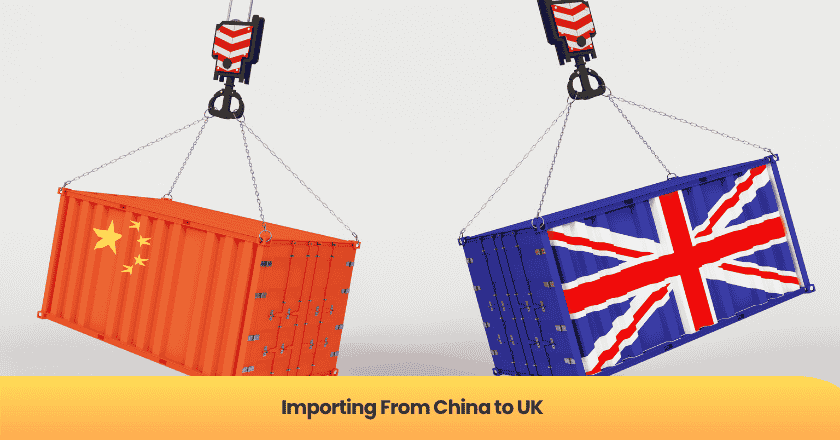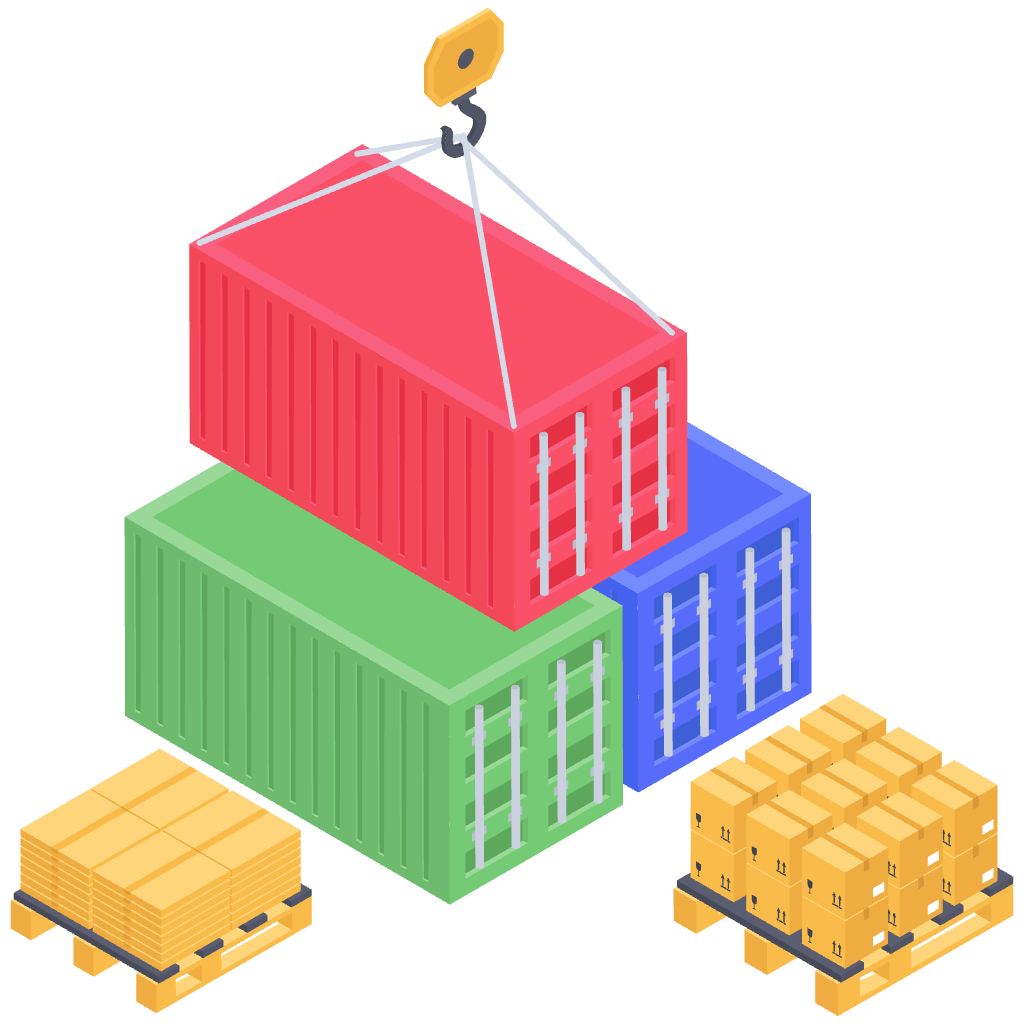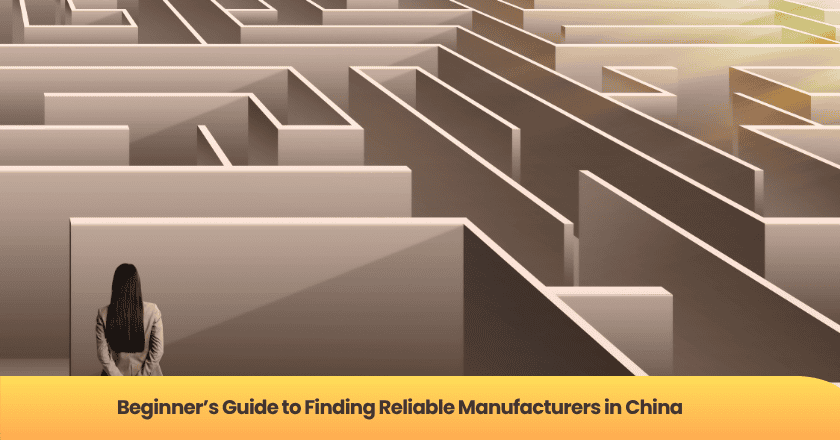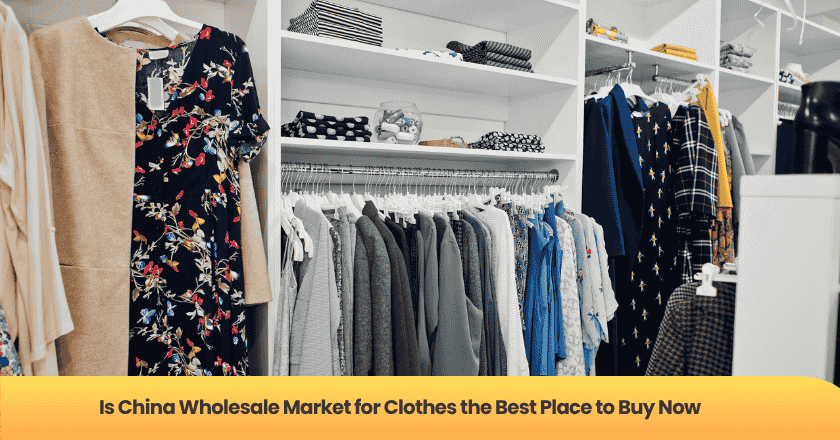
I begin importing from China to UK by identifying reliable suppliers. I check product compliance and ensure I have the correct documentation. I select the most efficient shipping method and manage costs carefully. I research the requirements for importing goods from China and plan logistics before starting. I find that importing from China to the UK requires attention to detail and a clear understanding of the UK regulations. Importing from China involves many steps, but with proper preparation, importing can be smooth and successful.
Key Takeaways
- Start by identifying reliable suppliers. Verify their reputation, check licenses, and request product samples to ensure quality.
- Understand the regulations for importing. Obtain an EORI number and gather all necessary documentation to avoid customs delays.
- Choose the right shipping method based on your needs. Compare sea, air, and rail options to balance cost and delivery time.
- Plan for all import costs. Include shipping fees, customs charges, and potential hidden costs in your budget to avoid surprises.
- Prioritize quality control. Conduct inspections and request compliance certificates to ensure products meet UK standards before shipping.
Find Suppliers
Verify Suppliers
I always start my import journey by searching for suppliers who have a strong reputation. I look for suppliers with a proven track record and positive reviews from other buyers. I check their business licenses and certifications to confirm they operate legally. I request product samples to evaluate quality firsthand. I also use video calls or factory visits to verify their production capabilities. I pay attention to how quickly they respond to my questions. Reliable suppliers communicate clearly and provide detailed answers.
Tip: I avoid suppliers who hesitate to share documentation or who provide inconsistent information.
I also compare prices and terms from several suppliers. This helps me understand the market and spot offers that seem too good to be true. I always trust my instincts and walk away from deals that raise red flags.
NewbuyingAgent Sourcing Support
I rely on advanced sourcing solutions to streamline my supplier search. NewbuyingAgent uses AI to recommend trending products and connect me with factories that match my needs. I benefit from cost savings, as these services negotiate prices directly with manufacturers. I appreciate that they handle quality checks and monitor production from start to finish. This gives me peace of mind and lets me focus on growing my business.
- I receive regular updates on my orders.
- I get support with logistics and shipping arrangements.
- I enjoy flexible payment options that help me manage cash flow.
By using these sourcing solutions, I reduce the risks of importing and ensure that I receive products that meet my standards. I find that leveraging technology and expert support makes the supplier selection process much more efficient and reliable.
Importing from China to UK: Regulations
Understanding the regulations for importing from China to UK is essential for a smooth import process. I always start by researching the requirements and making sure I follow the customs rules. Each step in the import process has its own set of regulations, and missing even one detail can cause delays or extra costs.
EORI Number and Licenses
When I begin importing goods from china, I need an Economic Operator Registration and Identification (EORI) number. This number allows me to interact with UK customs and is a legal requirement for anyone importing from China to the UK. I apply for my EORI number online before I start the import process. Without it, I cannot complete the customs clearance process.
Some products require special licenses. For example, if I import food, chemicals, or electronics, I check the specific requirements for those categories. I always review the latest UK import laws to avoid any surprises. I keep a checklist of all licenses I need for my products. This helps me stay organized and ensures I meet all legal requirements.
Note: I recommend checking the official government website for updates on import regulations and license requirements.
Required Documentation
I gather all the paperwork needed for importing goods from china. The right paperwork is critical for the customs clearance process. I make sure I have the following documents ready:
- Commercial invoice
- Packing list
- Bill of lading or airway bill
- Import licenses (if required)
- Certificates of origin
- Insurance documents
I double-check each document to ensure accuracy. Mistakes in paperwork can slow down the customs declaration process. I keep digital copies of all import documentation for easy access. I also label each file clearly so I can find what I need quickly.
| Document | Purpose | Who Provides It |
|---|---|---|
| Commercial Invoice | Details value and description of goods | Supplier |
| Packing List | Lists items and packaging details | Supplier |
| Bill of Lading/Airway Bill | Confirms shipment and transport method | Shipping company |
| Import License | Authorizes import of restricted goods | Importer |
| Certificate of Origin | Proves where goods were made | Supplier/Chamber of Commerce |
| Insurance Documents | Covers goods during transit | Insurance provider |
I always check the requirements for each document. Customs rules can change, so I stay updated to avoid problems.
Product Compliance
Product compliance is a key part of importing from China to UK. I make sure my products meet all UK regulations and standards. This includes safety, labeling, and environmental requirements. If I import electronics, I check for CE marking. For toys, I look for EN71 compliance. I read the product-specific regulations before placing any orders.
I test samples to confirm compliance. I ask suppliers for certificates and test reports. I keep these documents as part of my import documentation. If customs officers request proof, I can provide it immediately.
Tip: I never assume that products automatically meet UK standards. I verify compliance before shipping.
Following the regulations and having the right paperwork helps me avoid delays and penalties. I treat the import process as a series of steps, each with its own requirements and customs rules. By staying organized and informed, I make importing from China to UK efficient and trouble-free.
Ship from China to UK: Methods
When I plan to ship from China to the UK, I always start by comparing different shipping methods. Each shipping method offers unique advantages and challenges. I consider the type of goods, budget, and shipping time before making a decision. Here, I share my experience with the main shipping methods for importing goods from China.
Sea Freight
Sea freight stands out as the most popular shipping method for large and heavy shipments. I choose sea freight when I import bulky items or need to keep costs low. The shipping time for sea freight usually ranges from 25 to 40 days, depending on the port of origin and destination. This method offers the best value for money when I do not need urgent delivery.
Pros:
- Lower cost for large volumes
- Suitable for heavy or oversized goods
- Flexible container options (FCL or LCL)
Cons:
- Longer shipping time compared to other methods
- More complex customs procedures
- Higher risk of delays due to weather or port congestion
Note: I always plan ahead when using sea freight, as delays can affect my supply chain.
Air Freight
Air freight provides the fastest shipping time when I need to import goods urgently. I use this shipping method for high-value or time-sensitive products. The shipping time for air freight usually takes 3 to 7 days from China to the UK. Although air freight costs more than sea freight, the speed and reliability often justify the expense.
Pros:
- Fastest shipping time
- High security for valuable goods
- Reliable schedules
Cons:
- Higher shipping costs
- Limited capacity for oversized or heavy cargo
- Stricter regulations on certain items
- always check the size and weight limits before choosing air freight. This method works best for electronics, fashion, and small consumer goods.
Rail and Road
Rail and road shipping methods offer a balance between speed and cost. I use rail freight when I want a faster alternative to sea freight but at a lower cost than air freight. The shipping time for rail freight from China to the UK usually ranges from 15 to 20 days. After the goods arrive in Europe by rail, I arrange road transport for final delivery.
Pros:
- Faster than sea freight
- Lower cost than air freight
- Environmentally friendly option
Cons:
- Limited routes and schedules
- Possible delays at border crossings
- Not suitable for all types of goods
- find rail and road shipping methods ideal for medium-sized shipments that require a balance of speed and cost.
Compare Shipping Options
To choose the best shipping method, I compare the main factors: shipping time, cost, and suitability for my products. I created a table to help visualize the differences:
| Shipping Method | Shipping Time | Cost | Best For |
|---|---|---|---|
| Sea Freight | 25–40 days | Low | Large, heavy shipments |
| Air Freight | 3–7 days | High | Urgent, high-value goods |
| Rail & Road | 15–20 days | Medium | Medium-sized, balanced needs |
When importing goods from China, I always match the shipping method to my business needs. I consider the urgency, product type, and budget. I also factor in customs clearance and potential delays. By understanding the shipping methods for importing, I make informed decisions that keep my supply chain running smoothly.
Tip: I recommend requesting shipping quotes from multiple providers and confirming the estimated shipping time for each method before finalizing your choice.
I know that choosing the right shipping method can make a big difference in the success of my importing process. I stay updated on the latest shipping options and always review the pros and cons before I ship from China to the UK.
Customs and VAT
UK Customs Process
When I import products, I always prepare for the customs clearance process. I gather all the necessary paperwork before my goods leave China. Customs officers in the UK check the paperwork to confirm that my shipment meets all requirements. I make sure my commercial invoice, packing list, and shipping documents are accurate. If I miss any paperwork, customs may delay my shipment. I track my goods during shipping so I can respond quickly if customs requests more information. I find that clear communication with my freight forwarder helps me avoid mistakes during customs clearance.
Tip: I keep digital copies of all paperwork in a secure folder. This makes it easy to share documents if customs needs them.
Import VAT and Duties
I always calculate the import VAT and duties before my goods arrive. The UK charges import VAT on most goods imported from outside the country. I check the requirements for my product category to know the correct VAT rate. Customs also applies duties based on the type and value of the goods. I use the UK government’s online calculator to estimate these costs. I pay VAT and duties before customs releases my shipment. This step is essential for importing goods from Chinawithout delays.
| Charge Type | How Calculated | When Paid |
|---|---|---|
| Import VAT | % of goods’ value + shipping | Before release |
| Duties | Based on product category | Before release |
Avoiding Customs Issues
I avoid customs issues by following all requirements for importing. I double-check my paperwork and confirm that my shipping documents match the goods in my shipment. I never undervalue my products or mislabel them. Customs officers in the UK take these issues seriously. I stay updated on changes in customs rules and requirements. If I face a problem, I contact customs directly to resolve it. Careful planning and attention to detail help me complete importing without unnecessary delays.
Note: I always allow extra time in my shipping schedule for customs clearance, especially during busy seasons.
Import from China to london: Logistics
Freight Forwarders
When I import from China to london, I always start by choosing reliable freight forwarders UK. These professionals handle the logistics of moving my goods from the factory to my destination. I look for freight forwarders UK with experience in importing goods from china. They understand the requirements for customs clearance and shipping. I ask for references and check their track record. Good freight forwarders UK help me avoid delays and ensure my paperwork is complete. They also provide advice on the best shipping routes and methods.
Tip: I always confirm that my freight forwarders UK can handle both sea and air shipping, depending on my needs.
Delivery to London
After my goods arrive in the UK, I arrange delivery to my warehouse or business in London. I coordinate with my freight forwarders UK to schedule the final leg of the journey. They manage customs clearance and make sure all paperwork meets the requirements. I check that the delivery service can handle my shipment size and type. Sometimes, I use local carriers for last-mile delivery. I track the progress and stay in contact with the logistics team to avoid surprises.
- I review the delivery schedule.
- I confirm the address and contact details.
- I prepare my team to receive the shipment.
Tracking Shipments
Tracking is essential when I import from China to london. I use online tracking tools provided by my freight forwarders UK. These tools let me monitor my shipment at every stage. I check updates regularly to ensure my goods move according to plan. If I notice any delays, I contact my freight forwarders UK for an explanation. Accurate tracking helps me plan my inventory and respond quickly to any issues. I keep all paperwork organized so I can answer questions from customs or delivery services.
| Step | Action Taken | Importance |
|---|---|---|
| Booking | Confirm shipping details | Prevents mistakes |
| In Transit | Monitor tracking updates | Ensures visibility |
| Arrival in London | Prepare for customs clearance | Avoids delays |
Note: I always double-check the requirements for importing and keep my paperwork ready for review.
By following these steps, I make the process to import from China to london efficient and reliable. I stay proactive, communicate with my freight forwarders UK, and keep all requirements in mind when importing goods from china.
Importing from china: Costs
Understanding the full range of import costs helps me plan my budget and avoid surprises. When importing, I always break down the expenses into three main categories: shipping fees, customs charges, and hidden costs.
Shipping Fees
Shipping makes up a significant part of my total expenses. I compare different shipping methods to find the best balance between speed and cost. Sea freight usually offers the lowest rates for large shipments, while air shipping provides faster delivery at a higher price. Rail shipping sits between these two options in terms of both cost and speed. I always request detailed quotes from shipping providers. These quotes often include fuel surcharges, handling fees, and insurance. I check if the shipping fee covers delivery to my warehouse or only to the port.
Tip: I ask for a breakdown of all shipping charges before confirming my order.
Customs Charges
Customs charges in the UK include import duties and VAT. I calculate these costs based on the value of my goods, the shipping cost, and the product category. The customs office uses the declared value to determine the duty rate. I use official online calculators to estimate these charges before my goods arrive. Paying customs charges on time ensures my shipment clears quickly. I keep all receipts and documents for my records.
| Cost Type | How Calculated | When Paid |
|---|---|---|
| Import Duty | % of goods + shipping | Before release |
| VAT | % of total value | Before release |
Hidden Costs
Hidden costs can catch me off guard if I do not plan ahead. These may include storage fees at the port, demurrage charges for delayed pickup, and inspection fees. Sometimes, I face extra costs for document preparation or changes in shipping schedules. I also budget for currency conversion fees and bank charges when making international payments. By tracking all possible expenses, I keep my importing process smooth and predictable.
Note: I always review my import costs after each shipment to improve my budgeting for future orders.
Payments and Quality
Safe Payment Methods
When I import products, I always prioritize safe payment methods. I use secure options like bank transfers, PayPal, or letters of credit. These methods protect my funds and provide a record of each transaction. I avoid sending money through informal channels. I confirm the supplier’s bank details before making any payment. I also split payments into deposits and final balances. This approach reduces my risk if the supplier fails to deliver or if the goods do not meet my expectations.
Tip: I always request a proforma invoice before sending any payment. This document outlines the terms and helps me verify the supplier’s information.
Quality Control
Quality control is essential in every import process. I never skip this step, even when I trust my supplier. I arrange for product inspections before shipping. I check samples for defects, packaging, and compliance with UK standards. I use third-party inspection services when possible. These professionals provide unbiased reports and help me catch issues early. I keep detailed records of all inspections. If I find problems, I address them before the goods leave the factory.
| Quality Control Step | Why I Do It |
|---|---|
| Sample Testing | Confirms product matches order |
| Pre-shipment Inspection | Identifies defects before shipping |
| Documentation Review | Ensures compliance with UK regulations |
Quality Guarantee
I always look for suppliers who offer a clear quality guarantee. This gives me confidence that my products will meet my requirements. I check the terms of the guarantee and make sure it covers defects, shipping damage, and compliance issues. If a problem arises, I contact the supplier immediately and provide evidence. I expect prompt resolution, such as a replacement or refund. A strong quality guarantee protects my investment and helps me build trust with my customers.
Note: I keep all communication and inspection reports organized. This documentation supports my case if I need to claim under a quality guarantee.
Tips and Mistakes
Avoid Delays
I always plan ahead when importing from china. I check all paperwork before shipping. Missing documents or incorrect details can cause delays at customs. I set reminders to review shipping schedules and confirm delivery dates with my freight forwarder. I track my shipments online and stay in contact with my logistics partners. If I notice a delay, I act quickly to solve the problem. I keep backup copies of all paperwork in case I need to resend them. Careful planning helps me avoid costly delays when importing goods from china.
Tip: I create a checklist for each shipment. This helps me confirm that every step is complete before my goods leave China.
Common Pitfalls
I see many importers make the same mistakes when importing from china. Some forget to check product compliance with UK standards. Others underestimate the total cost by ignoring hidden fees. I always double-check the paperwork and confirm the product specifications. I avoid suppliers who refuse to provide samples or clear answers. I never rush the process. Taking shortcuts often leads to bigger problems later. I also watch out for changes in customs rules, which can affect importing.
| Mistake | How I Avoid It |
|---|---|
| Missing paperwork | Use a detailed checklist |
| Ignoring compliance | Request certificates and reports |
| Underestimating costs | Calculate all fees in advance |
Communication Best Practices
Clear communication makes importing from Chinamuch easier. I use simple language and confirm every detail in writing. I ask suppliers to send photos and videos of the products before shipping. I respond quickly to questions and keep all messages organized. If a problem arises, I address it directly and request compensation if the goods do not meet my standards. Good communication builds trust and helps me resolve issues faster. I always keep a record of every conversation related to importing.
Note: I never assume anything. I ask questions until I understand every part of the process.
Importing from China to UK requires careful planning and strict attention to compliance. I always research product requirements and create a checklist before starting. I review every regulation related to importing from China to the UK and keep my documentation organized. I recommend consulting experts or building a detailed import checklist for each shipment. Clear communication and ongoing research help me avoid mistakes when importing from China to the UK. Success in the UK market starts with preparation.
Tip: Stay updated on changes in regulations to keep your importing from China to UK process smooth.
FAQ
What documents do I need to import from China to the UK?
I always prepare a commercial invoice, packing list, bill of lading or airway bill, and any required licenses. I also keep certificates of origin and insurance documents ready for customs clearance.
How long does shipping from China to the UK usually take?
Shipping time depends on the method. Sea freight takes 25–40 days. Air freight usually arrives in 3–7 days. Rail and road options take about 15–20 days. I choose based on my delivery needs.
Do I need an EORI number to import goods?
Yes, I always apply for an EORI number before importing. This number allows me to interact with UK customs and is required for all importers.
How can I ensure product quality when importing?
I request product samples and arrange third-party inspections. I check compliance certificates and review detailed inspection reports. I never skip quality checks before shipping.
What are the main costs involved in importing from China?
I budget for shipping fees, import duties, VAT, and possible hidden costs like storage or inspection fees. I always request detailed quotes and calculate all expenses before placing an order.
Get Started Today
Let's Turn Your Sourcing Goals into RealityVisit Us:Building 10 #39 Xiangyuan Road, Hangzhou, China




